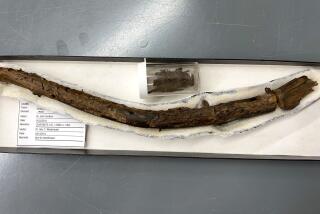TOXIC COMMON HOUSE AND GARDEN PLANTS
Orange County is home to a long list of common house and garden plants that are toxic. Contact with these plants may cause anything from a simple rash to a more serious problem. For example, some may cause breathing difficulties if they are chewed or swallowed. Today, Clipboard begins a series spotlighting these plants. Each Friday we will profile a different one, including a sketch and information on why, particularly if you have small children or pets, you may want to have a second look at your yard, garden, and house plants.
CASTOR BEAN (Ricinus communis): The seed of the castor bean can be highly poisonous if eaten. It can cause burning of the mouth, throat and stomach, vomiting, diarrhea, abdominal cramps, dulled vision, convulsions, respiratory distress, paralysis and even death. One to three seeds may be fatal to children.
NIGHTSHADE (Solanum nigrum): The name nightshade is given to species in the genus Solanum and to certain other plants. The species usually called nightshade in this area is Solanum nigrum, also known as black nightshade. The black berries of this plant are poisonous, and can cause nausea, vomiting, abdominal pain, diarrhea, trembling, paralysis, coma, and death if eaten in sufficient quantities.
Toxic Common name Botanical name Oxalates Agapanthus Nerine bowdenii Arrowhead vine Syngonium podophyllum Asparagus fern Asparagus setaceus plumosus Avocado Persea americana Azalea Rhododendron occidentale Bird of Paradise Strelitzia reginae Bonsai tree Pinus pentaphylla, etc. Boston ivy Parthenocissus quinquefolia Caladium Caladium Calla lilly Calla palustris Candelabra cactus Euphorbia lactea Castor beans Rinicus communis Chrysanthemum Chrysanthemun Creeping charlie Glenoca hederacea Creeping fig Ficus Crown of thorns Euphorbia milli Daffodil Narcissus Dumbcane Dieffenbachia amoena Emerald duke Philodendron hastatum Foxglove Digitalis purpurea Geranium Pelargonium Geranium California Glacier ivy Hedera graceria Gold-toothed aloe Aloe nobilis Heart Ivy Hedera helix Heartleaf Philodendron cordatum Heavenly bamboo Nandina domestica Holly Ilex Hyacinth Hyacinthus orientalis Indian laurel Ficus nitida Indigo plant Indigofera Ivy Hedera helix Jerusalem cherry Solanum pseudocapsicum Licorice plant Glycyrrhiza lepidata Majesty Philodendron hastatum Marble queen Scundapsus aureus Mistletoe Phoradendron flavescens Needlepoint ivy Hedera helix ‘needlepoint’ Nephthytis Syngonium podophyllum albolineatum Nightshade Solanium nigrum Oleandar Nerium oleander Pansy Viola tricolor Parlor ivy Philodendron cordatum Pencil cactus Opuntia ramosisima Peyote/mescaline Lophophora williamsii Philodendron Philodendron Poinsettia Euphorbia pulcherrima Pothos Scindapsus aureus Pot mum Chrysanthemum mortiforium Pyracantha Pyracantha Red princess Philodendron hastatum Rhododendron Rhododendron occidentale Ripple ivy Hedera helix ‘ripple’ Saddle leaf Philodendron selloum Sago plant Cycas revoluta Spider mum Chrysanthemum morifolium Split leaf philodendron Monstera deliciousa Sprengeri fern Asparagus densiflorus ‘sprengeri’ Strings of pearls Senecio rowleyanus Sweet pea Lathyrus odoratus Umbrella plant Cyperus alternifolius Weeping fig Ficus benjamina
Common name Toxic Dermatitis Possible Agapanthus Arrowhead vine Asparagus fern Avocado Azalea Bird of Paradise Bonsai tree Boston ivy Caladium Calla lilly Candelabra cactus Castor beans Chrysanthemum Creeping charlie Creeping fig Crown of thorns Daffodil Dumbcane Emerald duke Foxglove Geranium Geranium Glacier ivy Gold-toothed aloe Heart Ivy Heartleaf Heavenly bamboo Holly Hyacinth Indian laurel Indigo plant Ivy Jerusalem cherry Licorice plant Majesty Marble queen Mistletoe Needlepoint ivy Nephthytis Nightshade Oleandar Pansy Parlor ivy Pencil cactus Peyote/mescaline Philodendron Poinsettia Pothos Pot mum Pyracantha Red princess Rhododendron Ripple ivy Saddle leaf Sago plant Spider mum Split leaf philodendron Sprengeri fern Strings of pearls Sweet pea Umbrella plant Weeping fig
DEFINITIONS:
Toxic oxalates--These plants contain irritating substances known as oxalate salts. Eating these plants may cause irritation of the mucus membranes, pain and/or swelling of the mouth, lips and tongue. This swelling may block the victim’s airway.
Toxic--These plants may contain any of a wide variety of poisons and may damage the stomach, heart, kidneys or other organs.
Dermatitis--Touching the sap from these plants may produce a skin rash.
Possible--Information is incomplete, but indicates that these plants may cause ill effects.
Source: UC Irvine Medical Center Regional Poison Center.






